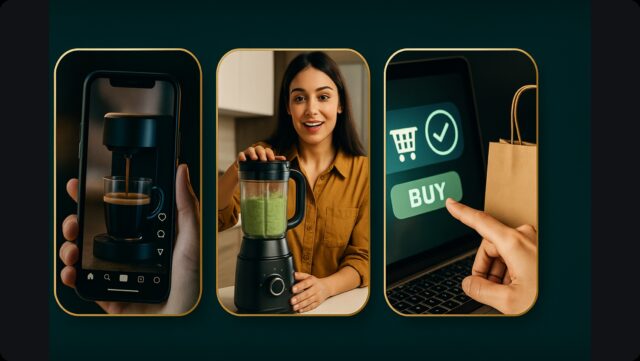If you’re an Amazon creator right now, you’ve probably felt the push: “Make your videos short, 10 to 30 seconds max.”
Amazon’s creator onboarding, support emails, and platform prompts all seem to be chanting it in unison.
And honestly, it makes sense that short clips are quick to make, easy to watch, and perfect for scrolling shoppers.
But here’s the thing: when you actually look at what top-performing Amazon influencers are doing, it’s not all bite-sized content.
You’ll see 60–120+ second deep-dives, full product walk-throughs, and even comparison videos that feel more like mini YouTube reviews than TikToks.
So, what’s going on? Why is Amazon obsessed with ultra-short videos, and why are some of the best creators doubling down on long ones?
The answer is simple: both work, but for different reasons. And the real secret to winning in 2025 is knowing when to go short, when to go long, and how to make both pay off.
2. Why Amazon Loves Short-Form
Let’s start with the obvious: Amazon’s short-video push isn’t random.
We’re in a video-first world. By 2025, a staggering 82%+ of all internet traffic will be video.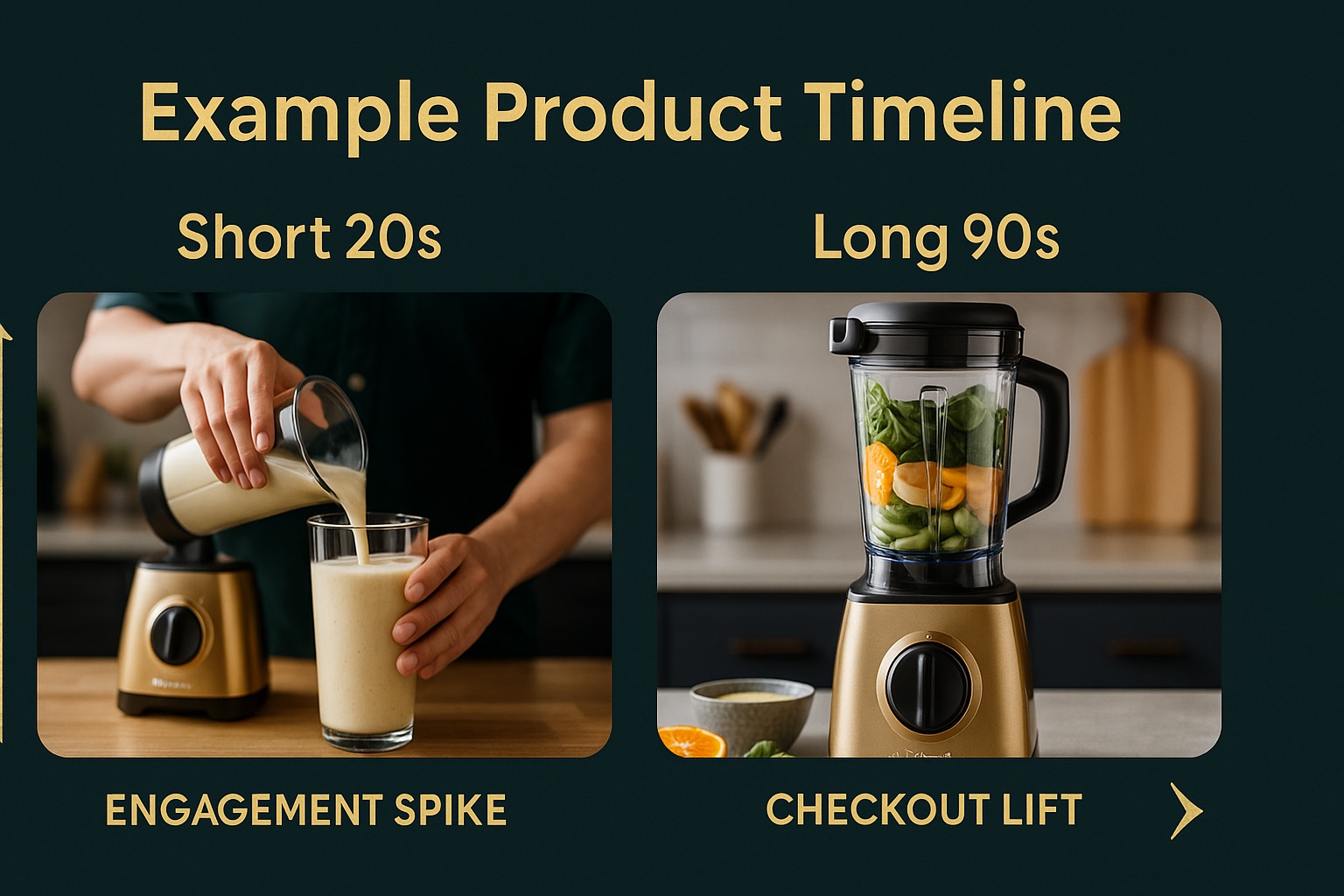
Shoppers are primed for short content. Platforms like TikTok and Instagram Reels have trained us to consume product info in seconds, not minutes.
In fact, 73% of consumers say they prefer short videos to learn about a product, and 57% of Gen Z lead the charge here.
They perform in the algorithm. Short clips generate more clicks and “add to cart” taps, and they’re easier for Amazon to test and surface across feeds.
Or, as Amazon strategist Ehud Segev puts it:
“Amazon’s system is obsessed with getting quick signals so they can test, learn, and elevate new creators faster.”
In short, short-form is Amazon’s attention magnet.
3. What Creators Know That Algorithms Don’t
Lane from DadReviews.org says it best:
“I think a lot of people get stuck on what’s the right length for a video. … I think it’s whenever you delivered enough value to make the viewer take an action.”
That’s the real difference-maker. A short video that leaves the shopper curious instead of convinced is wasted potential. And a long video that rambles? That’s a scroll-away waiting to happen.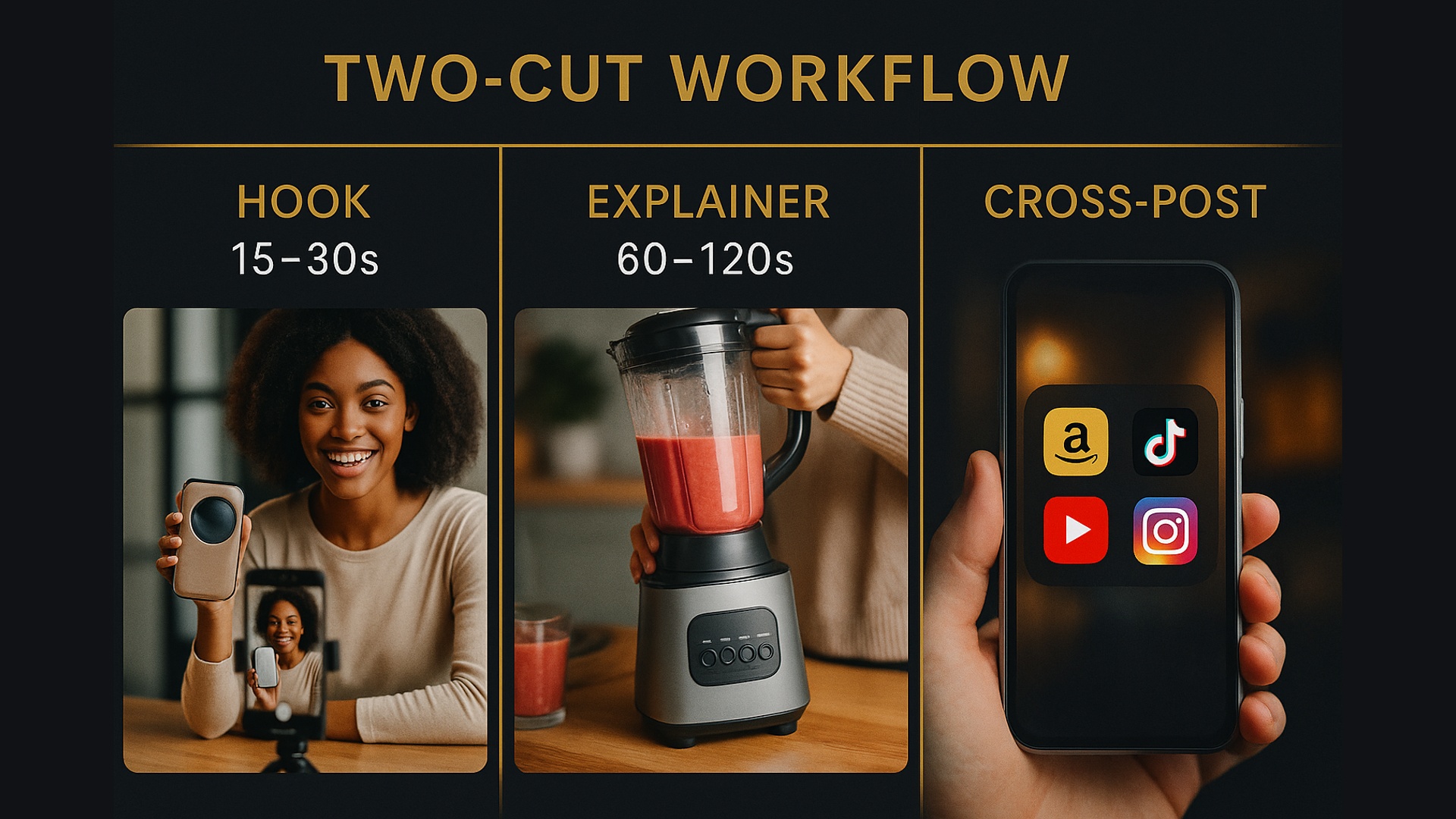
The sweet spot? Match the length to the product, the audience’s mindset, and the action you want them to take.
4. The Case for Short Videos (10–30s)
Short videos shine when:
- You need to grab attention fast.
- The product’s value can be encapsulated in a single, punchy idea.
- You want to test different hooks or angles quickly.
Why they work:
- 2× more engagement than longer videos on average.
- Perfect for impulse buys on gadgets, trending beauty items, and quick kitchen fixes under $30.
- Low production cost = high testing volume.
But… they can’t do everything. Short clips are great for sparking interest, but they don’t always close the sale, especially for higher-priced or complex products.
5. The Case for Long Videos (60–120+ seconds)
Long videos are where you slow down, show the details, and build trust. They’re perfect for:
- Higher-ticket items, where shoppers need proof before buying.
- Products with features or nuances you can’t cover in 15 seconds.
- Comparisons, before-and-afters, and follow-up updates (e.g., “30 days later”).
Why they matter:
- Product videos can boost conversion rates by up to 80%.
- Viewers are 144% more likely to add to cart after watching.
- Shoppers stay 88% longer on listings with video, giving your product more algorithmic love.
- For certain categories like electronics, fitness gear, or appliances, long-form is your closer.
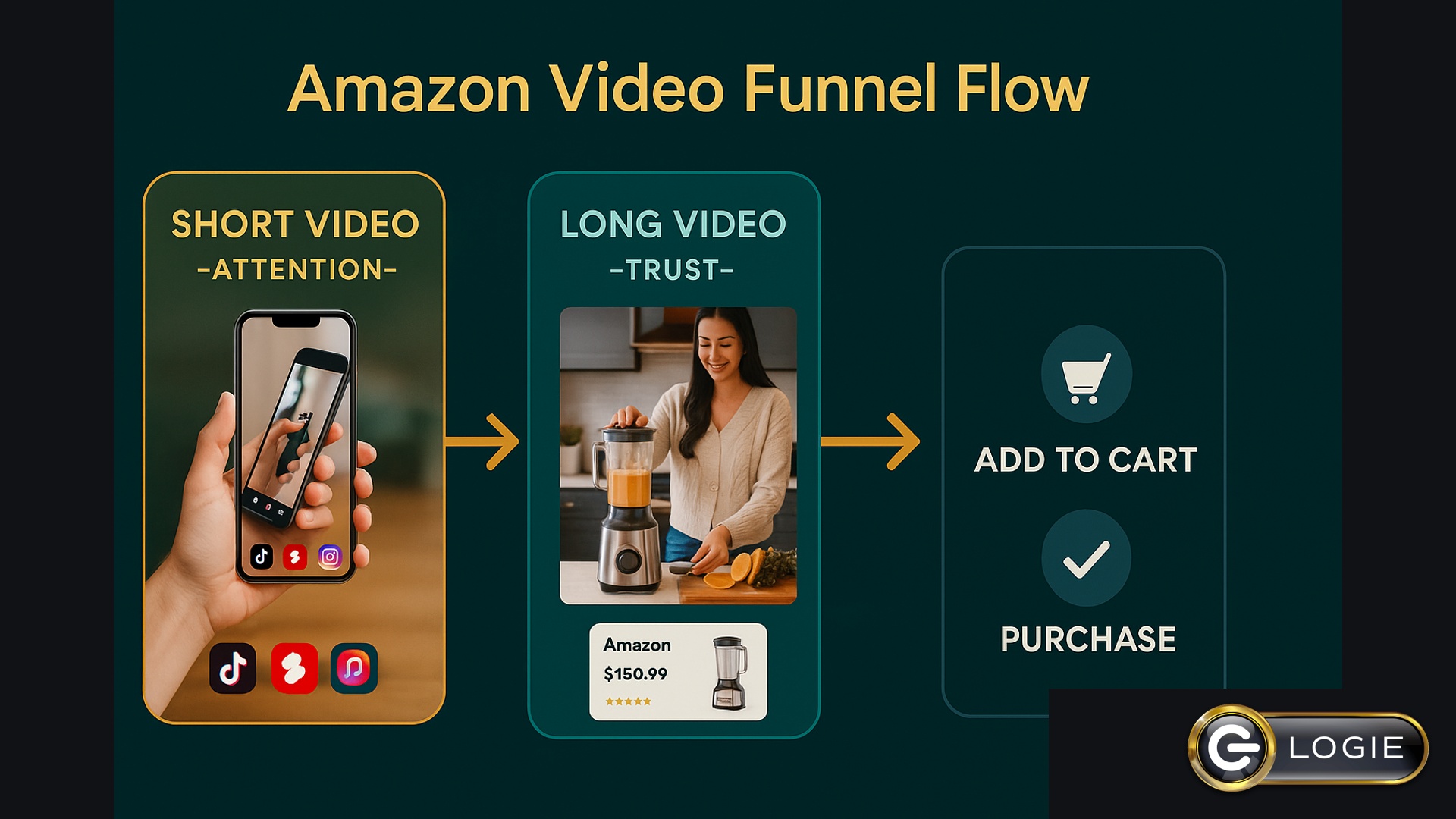
6. The Hybrid Strategy That Wins
The smartest creators aren’t picking a side, they’re running short + long in tandem:
- Short “hook” video (15–30s) to pull shoppers in.
- Long explainer/demo (60–120s) to answer questions and build confidence.
This works because:
- Short content drives reach.
- Long content drives conversion.
It’s the same reason YouTubers post Shorts alongside full-length videos: they feed each other.
7. Numbers That Seal the Deal
Here’s what the research says:
- Short videos = fast engagement: 2.5× more interaction, 50% average retention for <90s clips.
- Long videos have a deeper sales impact: 1–3 minute videos achieve ~58% conversion rates, and even 60+ minute content can retain 40–45% of viewers through the end.
- Shoppable video = sales lift: up to 30% higher conversion rates, 9× higher purchase intent compared to static images.
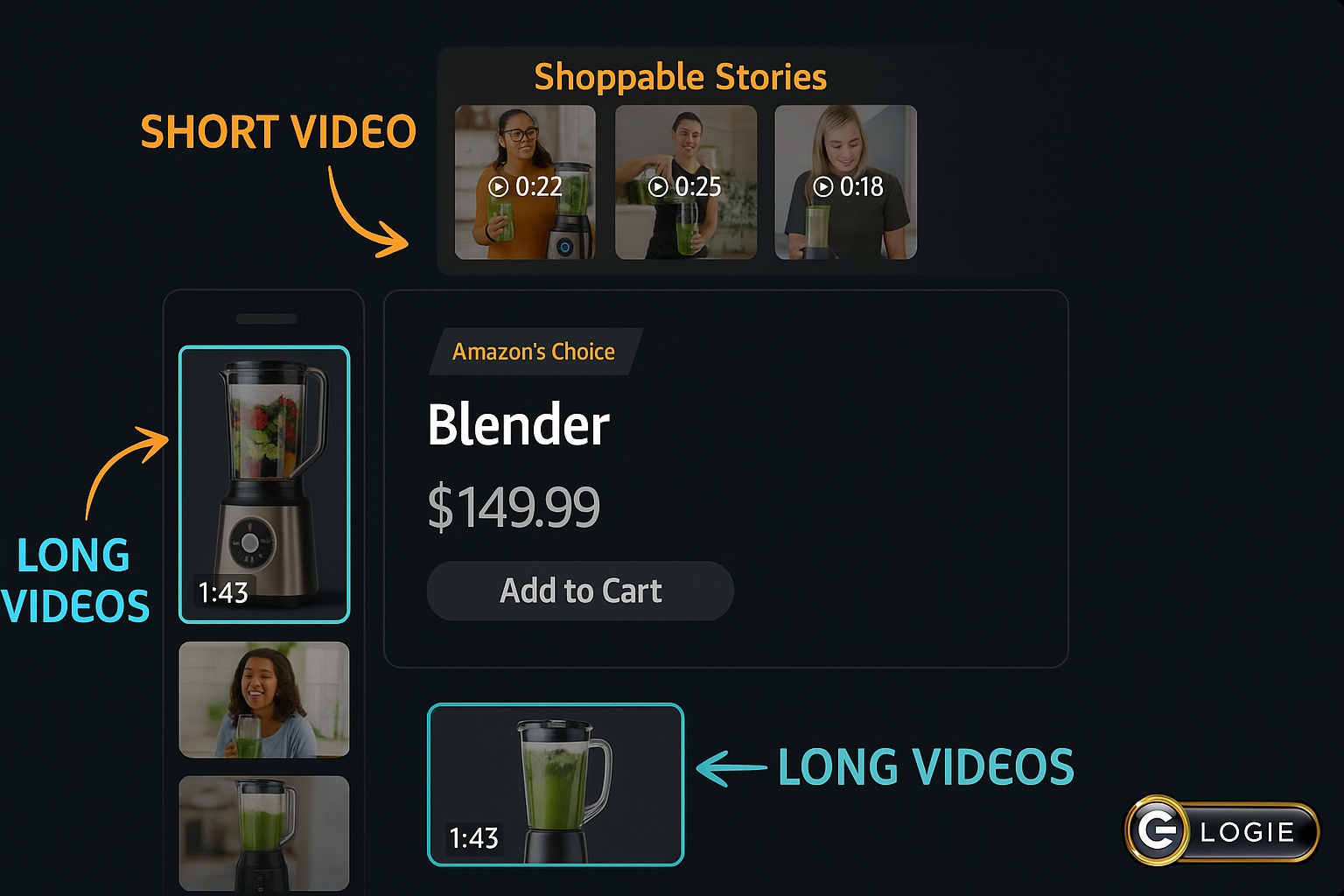
8. Recommendations for 2025
- Always make two cuts per product: a short hook and a long explainer.
- Front-load value the first 3–5 seconds, make or break your watch time.
- Segment by price & complexity:
<$30 → lead with short video.
$100 or complex → lead with long video.
- Track conversions, not just views. A million views with no sales is just vanity.
- Repurpose: turn your long demos into blog embeds, Bennable lists, or teaser clips.
Conclusion
If you walk away with one thing, let it be this: short videos help shoppers notice you; long videos help them trust you.
Amazon might reward you for playing the short-form game, but your bank account rewards you for creating the right video for the right moment in the buying journey.
Lane nailed it:
“It’s whenever you deliver enough value to make the viewer take an action.”
So stop stressing over the stopwatch. Start thinking about what your shopper needs to see to say yes.
In 2025, the creators who master both the quick spark and the deep close will own the Amazon video game.


